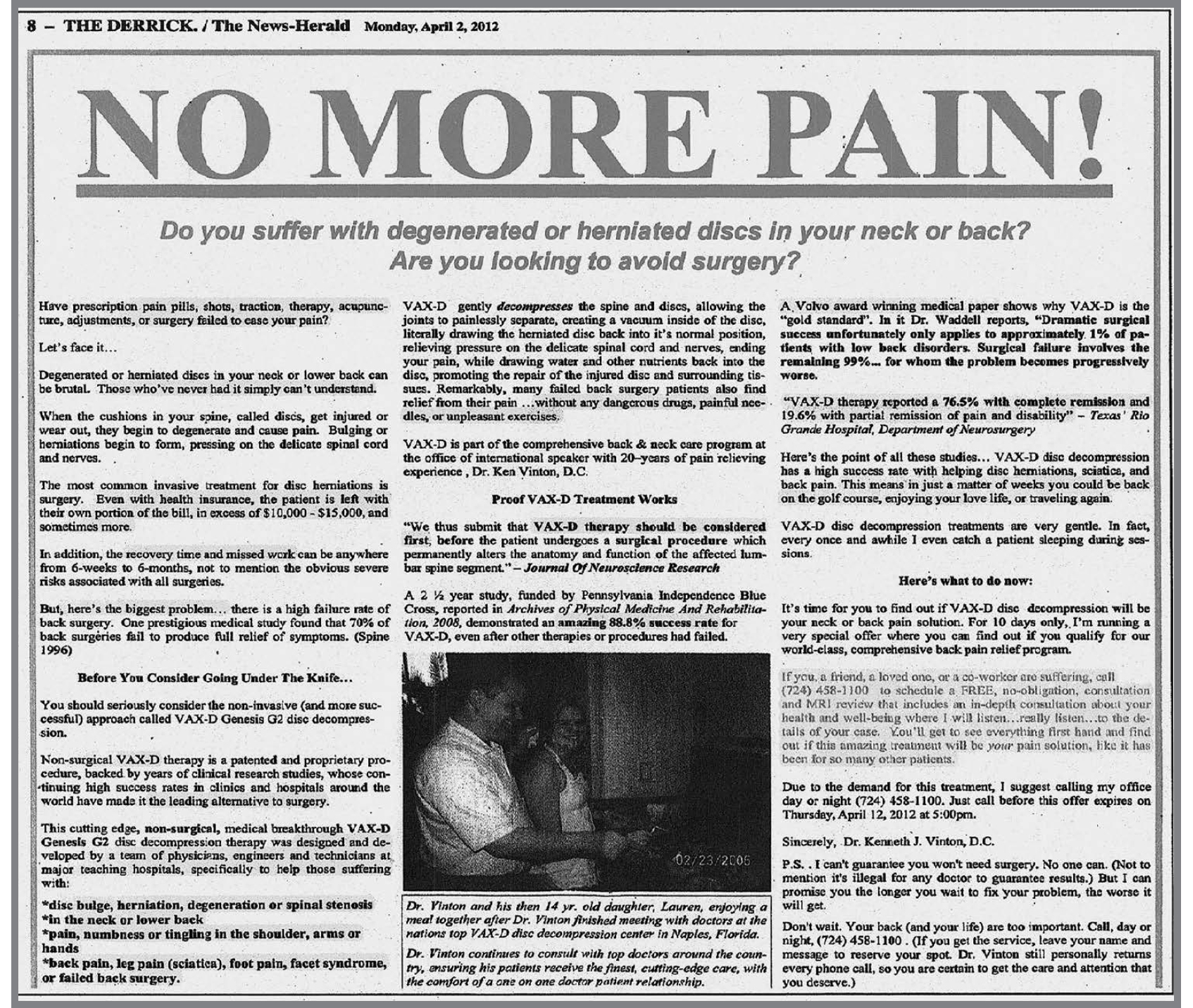![]()

The SECRET to Infinitely Higher Response
The Dale Carnegie Secret on Steroids
You have probably, at some point in your life, read Dale Carnegie’s classic book How to Win Friends and Influence People. If not, you should. You may even be a graduate of The Dale Carnegie Program, as hundreds of thousands, maybe millions of people are. It is, by far, the most enduring and successful course on communication, influence, attraction, and persuasion, period. At its core, the simplest of truths: one, people are more interested in themselves than in anyone or anything else; two, people want to be valued, respected, treated as important, and catered to; three, each person believes himself, his business, his situation, his needs to be unique—and is most responsive to someone who acknowledges that and is somehow well-matched or expert in that unique scenario.
When you move this to direct marketing, you can inject it with steroids and make it unbelievably powerful. And, as you’ll see in this chapter’s examples, you can gain incredible competitive advantage because few business owners are willing to customize their presentations for different audiences. I call this The Secret of Message-to-Market Match. Few understand it; fewer are ever willing to utilize it.
Here, first in Figure 11.1 on page 131, I have reprinted four samples of relatively simple direct-response postcards used by a GKIC Member in the property/casualty/commercial insurance business, Gordon Quinton. You’re not seeing both sides, you’re not seeing everything, but you are seeing enough. Here are some of his reported return-on-investment statistics, using only the first year, direct value of the clients obtained (not including subsequent years’ value or referrals):
Septic Contractors |
$13.00 income for $1.00 spent/1,300% ROI |
Optometrists |
$3.00 to $1.00/300% ROI |
Apt. Bldg. Owners |
$7.00 to $1.00/700% ROI |
I imagine business insurance is, pretty much, business insurance, but Gordon has made himself and what he offers precision matched to each type of prospective client. The optometrists get an entirely different postcard than do the HVAC contractors than do apartment building owners, etc. Gordon customizes the headline, the “compare rates” examples, photos, testimonials, even his own business’s domain name for each niche. And there is further congruent customization, as he has a separate and different website for each niche, too. Hopefully, you instantly grasp how very different this is from most business insurance brokers’ and agents’ marketing—typically, one big, broad, sloppy, and therefore uninteresting and ordinary, message for all. Even brokers and agents in his area who see all this won’t copycat it, because it’s too much trouble. But then, nobody in his entire industry is ever going to see 300% to 1300% returns on marketing dollars, either.
FIGURE 11.1: Gordon Quinton Example
Reprinted from the No B.S. Marketing Letter, October 2012

One more example, from another GKIC member, a chiropractor, Dr. Ken Vinton. Dr. Ken practices in a town of just 8,200 people. The month he provided me with the full-page newspaper ad shown to you in Figure 11.2, in pieces by necessity, on pages 133 and 134, he topped his best month in many years of practice, with over $70,000.00 in revenue, in large part thanks to this ad. What’s important is that Ken is not running a traditional, broad ‘n’ sloppy, everything-chiropractic-done-here, for anybody ‘n’ everybody ad. Not at all. Instead, he is targeting, calling out to, and speaking to sufferers of chronic and severe pain who have tried medical treatment and OTC products unsuccessfully AND are being urged to go under the surgeon’s knife. He has crafted a specific Message for a very specific prospective patient with full knowledge that others will be quickly repelled by and uninterested in this ad.
So, you have a B2B and a consumer marketing example, demonstrating that the very same principles, strategies, and tactics apply in either sphere. Both these examples, in their own way, demonstrate “the Dale Carnegie Secret on Steroids.” There is no reason you can’t figure out and capitalize on this secret as well.
On a related note, I’ve done a monstrous amount of research, and gathered great actual examples, for books about two very specific demographic/psychographic target markets: one, boomers and seniors; the other, affluent consumers. Like a business niche that Gordon chooses to Message-Market Match to, or a group of severe back-pain sufferers flirting with last-resort surgery that Dr. Vinton addresses, these groups have their own tribal language, their own key interests, their own turn-ons and turn-offs.
FIGURE 11.2: Dr. Ken Vinton Example
Reprinted from the No B.S. Marketing Letter, October 2012


The affluent and ultra-affluent market could be very important to you as a safer, higher ground in coming economic storms. My book, No B.S. Guide to Trust-Based Marketing lays out important strategies for attracting and gaining acceptance from those high value customers, clients, or patients.

The boomer and senior market IS going to be important to you. Starting in 2018, more than 50% of adult consumers in the U.S. will be over age 60, and they’ll control 70% of discretionary spending. The Age/Profit Wave will determine the fate of almost every business, directly or indirectly. Another of my titles, No B.S. Guide to Marketing to Leading-Edge Boomers and Seniors, is your guide to winning with this consumer population.
Notes: These Examples—as well as all other Examples in this book—are copyright protected by their owners, used here with permission, but otherwise all rights reserved. Copying them in whole or large part or their copy verbatim is in violation of U.S. copyright law and can subject you to civil and criminal penalties. The examples in this chapter first appeared in my “Million Dollar Marketing Lesson” in The No B.S. Marketing Letter. To receive the Letter every month, as part of a “test drive” by the author for readers of this book, see page 229.